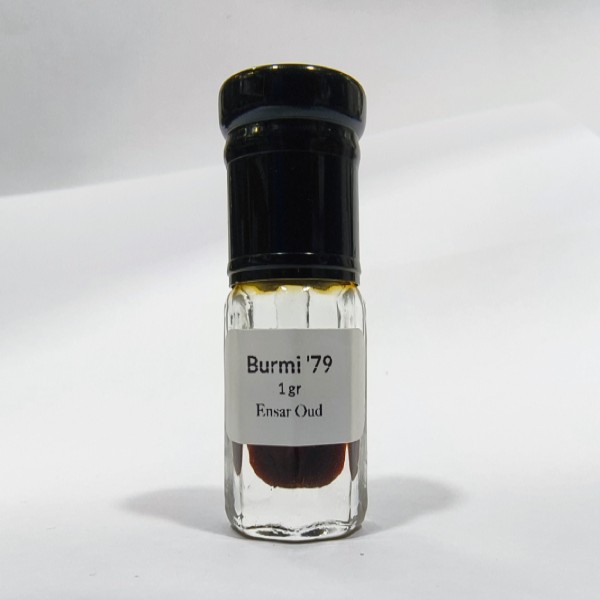Burma ’79 1g
After spending years distilling oud and countless hours studying the Sultan’s precious oils, here’s what I’ve learned: they dip into a primordial pool oozing with blue, purple, Burmese and Malaysian and Vietnam and – it’s like the Sultan didn’t care about where or which species the oil came from. It was about capturing what they all have in common…
They capture not only a time and a generation of trees that are now wiped from the map, but they were distilled in such a way as to truly capture the soul of agarwood. And it’s that ‘soul’ you smell echoed across almost all high-grade ouds. That vintage oud DNA, full-on. The ‘incense’ note everybody always picks up on, the ‘resinous’ undercurrent that’s all-pervasive in high-grade ouds. That smell, stripped of the auxiliaries.
That’s why it’s easy to enjoy the SQ signature. That’s also why SQ ouds puzzle oudheads to this day. Why they puzzle me. It’s why it’s often next to impossible to pinpoint the exact origin of certain of his best ouds because of how Sultan Qaboos went about bringing these priceless distillations to life; how his signature is written in thick fat oudy strokes so you can’t read the label made in………?
Ouds play off each other – they highlight each other’s good sides and expose their bad sides. They teach you about which soil those notes of cola, cherries, or vanilla stem from and the species of aquilaria that brought them to fruition; why some ouds smell like apricot jam and others like mint chocolate resin.
But Burma ’79 is oud a priori.
If all this sounds a bit woo-woo, think of it like this: Sultan Qaboos bought and imported the most insane agarwood money could buy, and did so when oud was at its peak.
The 70s – early 90s were the height of agarwood not only because of the access to sinking-grade giants that is now a distant memory, but also the new jungles that all opened up around the same time.
The Sultan was no doubt a pioneer and likely funded the earliest oud expeditions to remote jungles (which is how you got Oud Royale from Maroke when nobody else even knew about Maroke). The treasures they unearthed weren’t then distributed and separated and sent to various local distillers, but were all flown to Oman to his own, custom-made distillery.
Any half-experience oud lover can distinguish his or her Papuas from Borneos and Thais, Cambodis from Guallams, cheesy Laotians from funky Hindis.
But have you noticed that divergent as these profiles may be, they share that inescapable high-grade incense thread that’s dimly weaved through them all? Sometimes almost imperceptible, but present.
Burma ’79 smells like that thread, isolated and amped up full dial.
In typical SQ fashion, Burma ’79 will puzzle your head and delight your nose. It’s Burmese, yet you pick up a mesmerizing purple Malayu facet in it. It shouldn’t be in here! (The first Malaysian ouds of this kind would not be distilled for another decade.) Again, he was able to drill to the heart of the raw materials into the core where colors melt into a pool of oud that very few have since been able to reach.
That’s what makes Sultan Qaboos the oud world’s OG. It’s why his ouds are what they are. That his ouds capture that primordial DNA that teaches us that the purple haze is in fact not only found in Indo-Malay ouds, just like bitter red kinam isn’t limited to Vietnam, but that oud is in the end… OUD. It’s just that we’ve never smelled oud so well made so as to dig into that molten core and splash it all around.
That he could coax this cool purple from a Burma makes you scratch your head and nosedive for another waft that leaves you puzzled and breathless at the same time. If you’ve smelled the likes of Oud SQ you’d know what this delightful paradox smells like.
We’re letting this oud go for way less than what its smell is worth, to celebrate the Sultan Qaboos’ legacy this Oudvember and for you to smell that undercurrent, that incense-note, that smokey-glaze, that resinous blast you relish in each of your favorite ouds – in the raw.


